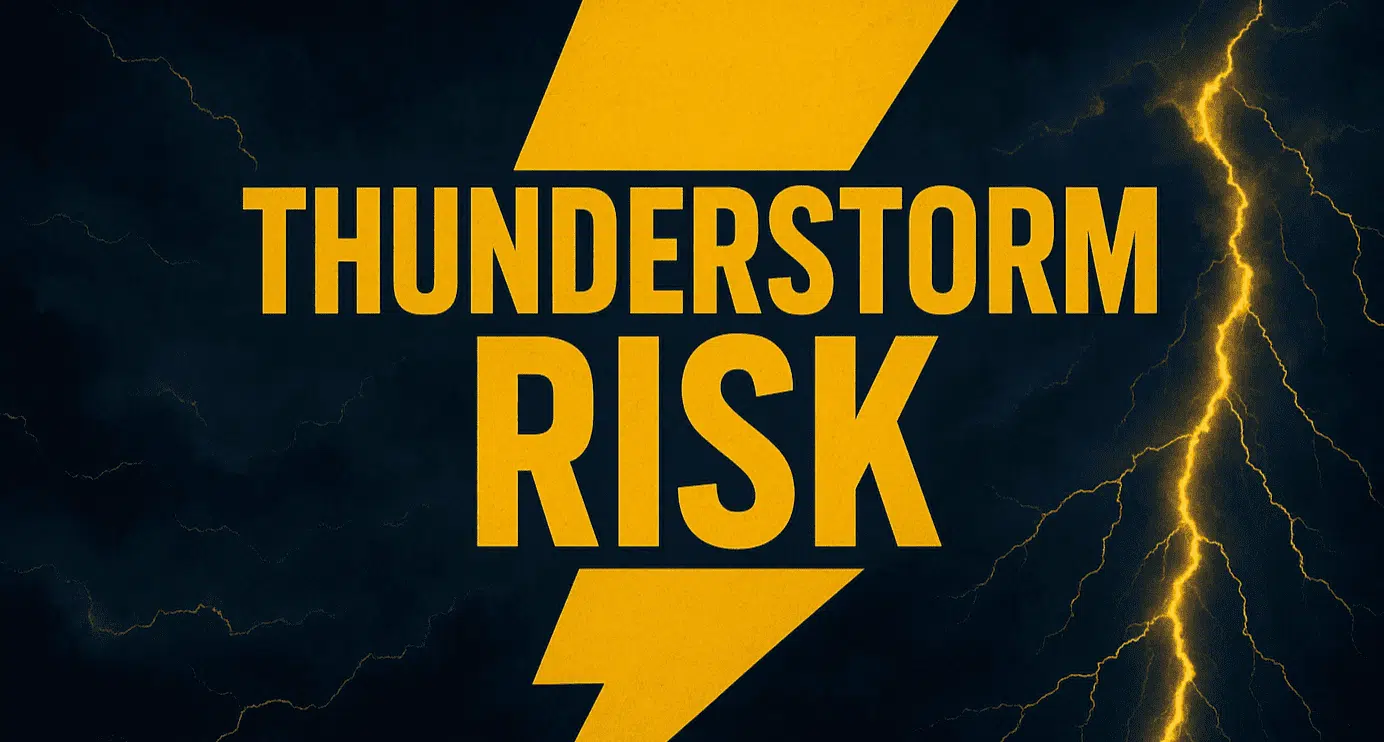Portland, Oregon — Western Oregon is staring down a split forecast early next week: either the hottest stretch of summer so far or a cooler, cloudier, and stormier turn. By Tuesday, highs could surge toward 99°F under hazy skies—or stall in the upper 70s to low 80s if clouds and thunderstorms take over.
Two Competing Scenarios
-
Cooler, Wetter Track (increasingly likely):
A compact low forming over northern California tracks north, pulling moisture into Oregon late Tuesday through Thursday. Expect more clouds, scattered showers, and thunderstorms, with the greatest odds in the Willamette Valley (Eugene, Salem, Portland). Temperatures trend below recent norms, generally upper 70s to low 80s where storms and thicker cloud cover persist. -
Hotter, Hazy Track (still possible):
If the low stays farther south, western Oregon remains on the dry, subsident side of the pattern. Result: hot afternoons in the mid–upper 90s, locally near 99°F, with haze possible. Thunder chances would be minimal and confined to higher terrain.
Model Trends and Timing
Forecast models have nudged toward the cooler, stormier solution, but confidence hinges on the low’s final path. The most likely window for convection stretches from late Tuesday into Thursday, peaking Tuesday night/Wednesday. Expect day-to-day adjustments to timing and coverage as mesoscale details (outflow boundaries, cloud debris) come into focus.
What to Expect by Region
-
Willamette Valley (Eugene–Salem–Portland):
Increasing clouds Tuesday, with scattered thunderstorms possible into Thursday under the wetter track. Temperatures upper 70s–low 80s with storms; mid–upper 90s if the hot scenario holds. -
Cascades & Foothills:
Highest thunder probability and potential for frequent lightning, gusty outflow winds, brief downpours, and small hail. Mountain travel could encounter rapidly changing conditions. -
North Coast & Coast Range:
More clouds and passing showers under the wet track; temperatures stay mild. Thunder risk lower than inland but not zero.
Hazards to Monitor
-
Lightning & Fire Starts: Dry-to-wet lightning is possible, especially in the Cascades and east slopes. Any strikes outside rain cores could ignite new fires.
-
Gusty Outflow Winds: Thunderstorm outflows may produce sudden, strong gusts and localized blowing dust.
-
Localized Downpours: Brief heavy rain could cause ponding on roads and sharp visibility drops.
-
Heat (if the south track wins): Heat indices near 100°F in urban cores; dehydration and heat illness risks increase.
Planning Tips (Tue–Thu)
-
Stay flexible: Outdoor events, construction, and mountain trips may need same-day adjustments.
-
Heat or storms gear: Pack water, sun protection, and a rain layer. Secure tents/canopies against gusty outflows.
-
Fire safety: Avoid sparks; report smoke promptly. Heed any burn restrictions.
-
Travel smart: Expect intermittent heavy showers, slick roads, and wind shifts near storms.
-
Power/comm backups: Isolated outages are possible with downed limbs from outflow winds.
What’s Next
The National Weather Service in Portland may issue watches or advisories by early next week if storm chances and coverage increase. Keep an eye on updated forecasts through Monday, as small changes in the low’s track will determine whether western Oregon bakes—or rumbles with thunder.












